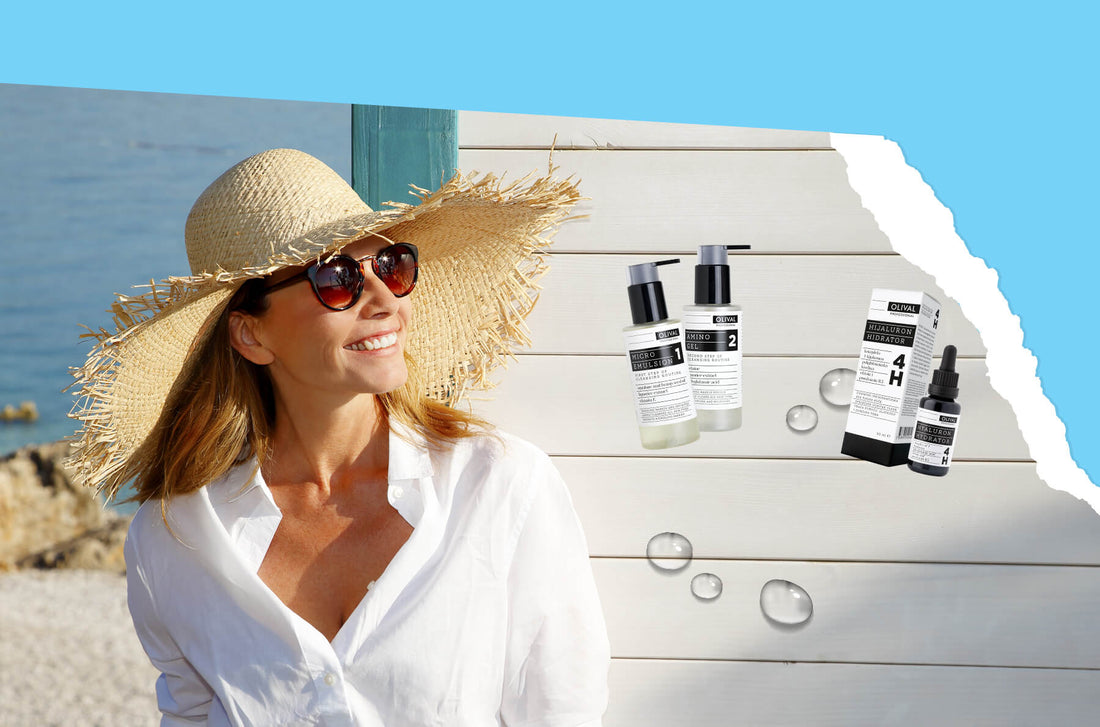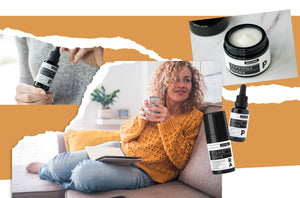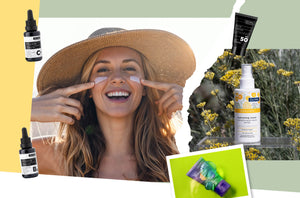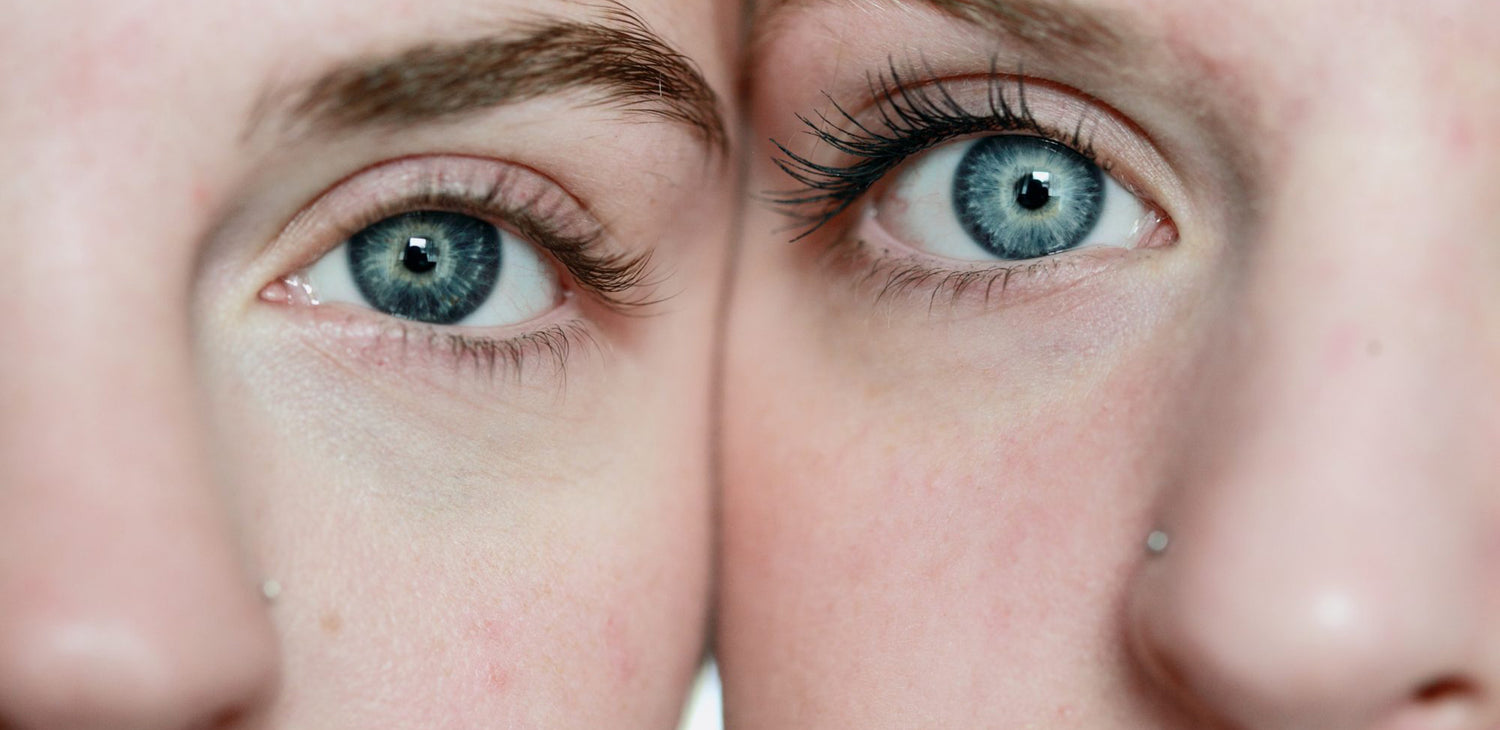Summer, that time of relaxation and carefreeness, is sometimes not carefree when it comes to skin care. As in every other season, our skin goes through changes that need to be responded to by adjusting the routine and choosing the right products. Now is the right time to get to know her better, observe her more carefully and follow all fluctuations.
1. Carefully assess the type and condition of the skin in which it is located
Recognizing your own skin type can be complex, especially when it "signals" completely opposite things for us. It is a little oily, but it is also dry, there are enlarged pores, but also a feeling of tightness... It is important to be able to recognize your skin, and the basic division of types is as follows.
Balanced skin is what we would normally call normal. It is not too oily, and not too dry. During the day, it shines minimally, usually in the area of the forehead and around the nose, and it is a healthy natural glow. You can recognize it by its smooth texture without (major) irregularities, enlarged pores and even complexion. Normal skin is not overly sensitive to hormonal changes during the cycle, nor to, for example, weather conditions.
Oily skin produces slightly more sebum, i.e. natural fat. If you have oily skin, you surely recognize the shine that comes out very quickly during the day, is secreted more and comes out even through powder. She often has enlarged pores, especially in the area around the nose, and is somewhat more sensitive to hormonal changes. It is also prone to the appearance of acne and comedones.
Dry skin produces less sebum than balanced skin. This is why it is matte during the day, and retains less water in its layers, which makes it inelastic and more sensitive to external conditions. If you have dry skin, you are most likely accompanied by symptoms such as a constant feeling of tightness, and sometimes redness or itching.
Combination skin can be a combination of several skin types, usually balanced and oily. The T-zone, from the forehead to the nose to the chin, tends to secrete sebum and clog pores, while the rest of the facial skin is usually balanced.
Each skin type requires its own customized routine. Dry skin will need more nourishing and denser textures of products based on lipids (oils), while oily skin will benefit from lighter textures. Also, oilier skin will need more help in the form of exfoliation, which will prevent clogging of pores, and thus the occurrence of acne.
What can be common to every skin type is sensitivity in the entire spectrum of phenomena (from the development of rosacea, acne to allergies) and much more frequent dehydration, which is especially emphasized during the summer. Every skin needs water, regardless of its type, and dehydration can occur for various reasons. These are often the use of drying soaps to clean the face , impaired protective function of the skin due to routine care, but also internal and external factors (diet, stress, hormones, weather, UV radiation).

To begin with, along with hydration, which we will get to later, the skin needs an adequate cleansing process and SPF. It is necessary to introduce gentle, pH-optimized two-step cleansers such as Microemulsion and Amino gel , which will thoroughly cleanse from sun protection products, make-up and other impurities, without drying the skin. A good sun protection product every day, chosen according to the type and needs of the skin, is essential in every routine, and perhaps the most important ally in anti-aging care today.

2. Take care of the skin barrier
Skin health should come first and everything starts from it. The protective layer, as well as the natural microbiome, are key to preserving the normal characteristics and role of our skin. They are also crucial for preventing dehydration, tendency to irritation, as well as for the introduction of powerful active ingredients. What does that mean in practice? While the barrier is broken, there should be no room for retinol, high concentrations of chemical exfoliants and similar substances in the routine, and priority should be given to moisturizing and soothing components. Exaggeration with exfoliation, combining different acids during the week and similar attempts, unfortunately, usually end up with the completely opposite result from the desired one.
3. Introduce additional hydration (in the form of tonics and serums)
Light hydration is never out of place. The advantage of such products is that they are enriched with ingredients such as hyaluronic acid, polyglutamic acid, and ectoine, which deeply infuse moisture, give fullness, optically fill fine lines, and provide the skin with a soothing effect and a fresher appearance. It is good to choose liquid, breathable products such as Hidro tonic and Hyaluron hydrator 4H , which easily fit into any routine, and are suitable for the care of literally all skin types, including oily skin. In addition, there are antioxidants that are very desirable in the summer care routine. Vitamin serum C+ with Professional face fluid SPF 30 or Professional face cream SPF 50 , especially in combination with hyaluronic acid, is a winning combination against the effects of free radicals, blemishes and irregularities.
4. Don't forget to lock in the humidity
Oily skin is often treated with very aggressive, drying products that can regulate the secretion of sebum and bring short-term relief in terms of oiliness, but in the long term often lead to a vicious circle and in fact – even stronger oiliness and acne. Skin care should be gentle. Even the fat type needs hydration, and it is often based on hyaluronic acid as the gold standard. However, there is a catch 22. In fear of creams that leave the impression of weight compared to liquid serum preparations, as well as in fear of the comedogenicity of oils , this crucial last step is omitted after moisturizing serums. This is precisely what, in the long run, leads to dehydration because that last layer in the routine did not lock moisture into the skin and prevent it from drying out. Hyaluronic acid always needs a moist base and a more nutritious texture over it in order to show its full potential in care.

5. SPF is your friend
In addition to being an anti-aging ally, the protective factor is extremely important in the defense of cumulative skin damage caused by UV radiation. There are not only irritations, redness, wrinkles, but also much more dangerous consequences. The use of photosensitizing substances in the summer, retinoids and acids is often questioned during the summer. In fact, it all depends on individual readiness and awareness.
If you apply sun protection every day, regardless of the weather forecast, in a sufficient quantity and in a factor of 30 or 50, if you renew it during the day - especially on the beach, if you avoid literally "frying" in the sun or in a solarium and if there are no obstacles of an individual nature , there is no reason not to continue the care with these active ingredients. Remember, SPF is key because it will prevent burns as well, but also enable the best possible action and results of retinol and AHA or PHA acids.






